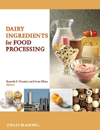Today’s laminators and sheeters are designed to deliver
state-of-the-art attributes that meet operators’ needs and bakers’
demands.
Marina Mayer, Executive Editor
Producing the perfect puff pastry takes a lot of skill, patience and operator knowhow. It also takes a premium formula, precise measurements and state-of-the-art equipment that delivers accuracy, flexibility and automation.
In addition, today’s laminating systems have to be able to perform multiple tasks, be stress-free and be able to grow with future needs, says Rich Breeswine, general manager of Koenig Technology, Inc., Richmond, Va.
“In the past, you would have one system to do yeast-raised donuts, another for puff pastries and Danish and then a different line for flatbreads, baguettes, pizza, etc.,” he says. “This would mean a multitude of lines in different rooms and a larger production staff needed for each product.”
That’s why Koenig created the Menes line of laminators and sheeters for loaf bread, baguettes, ciabatta, pizza, donuts, sheet cakes, croissants, strudel, pita and flatbread.
“The core feature of the Menes [line] is represented by the so-called ‘Twin Sat,’ which grants a minimum stress and force to the dough belt while being reduced in thickness,” says Breeswine. “In combination with several other modules, the Koenig Menes line offers the highest weight accuracy along with perfect artisanal and stress-free product quality.”
Meanwhile, Rademaker USA installed new methods of continuous laminating for high-speed applications and dough capacities up to 25,000 lb. per hour, says Eric Riggle, vice president of the Hudson, Ohio, company.
“Some laminating systems utilize a stop-and-start method to create the laminations. These are discontinuous styles of laminating, where the dough sheet is stopped during the pull-back or retraction,” he adds. “With high speeds or soft dough applications, the loop of dough that is created cannot often be pulled out when the conveyor starts moving again, causing production and quality issues. We have corrected this with a continuous running buffering system that does not stop and start the dough sheet.”
Furthermore, Canton, Mass.-based Reiser’s Vemag line now encompasses a single-lane sheeting system that combines a Vemag portioner with a rotary sheeter attachment to reduce hand labor and automate production lines.
“The rotary sheeter can be used to extrude all types of portioned doughs, fats, toppings and batter for panning applications,” says John McIsaac, vice president, strategic business development. “It can also extrude continuous sheets of product onto makeup lines.”
The rotary sheeter can also be used for margarine sheeting, McIsaac adds.
“Extruding continuous, precise and consistent sheets of margarine or other shortening onto moving lines is easily accomplished,” he says. “The fat/dough ratio remains constant, resulting in uniform quality and achieving exact calorie counts.”
Reiser also introduced a small diameter pumping system that offers precise flow of shortening and margarine on lamination lines. This helps keep calorie counts accurate and brings consistency to the process, McIsaac says.
“From our perspective, the application of the shortening or margarine must be accurate. Calorie counts are so important today and must be accurate for nutritional fact labeling,” McIsaac says. “Also, the system must be versatile enough to handle different fats and be easily adjustable. The Vemag easily handles all type of products and viscosities. With just the push of a button, the pre-programmed Vemag can easily switch over from one product recipe to another.”
Creating the perfect product doesn’t have to be a grueling process. Many of today’s laminators and sheeters come equipped with state-of-the-art features that meet operators’ needs and bakers’ demands.
Built for Perfection
Looking for a reprint of this article?
From high-res PDFs to custom plaques, order your copy today!







